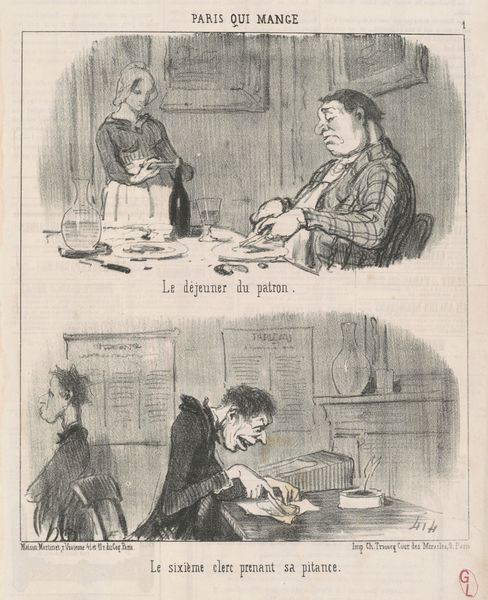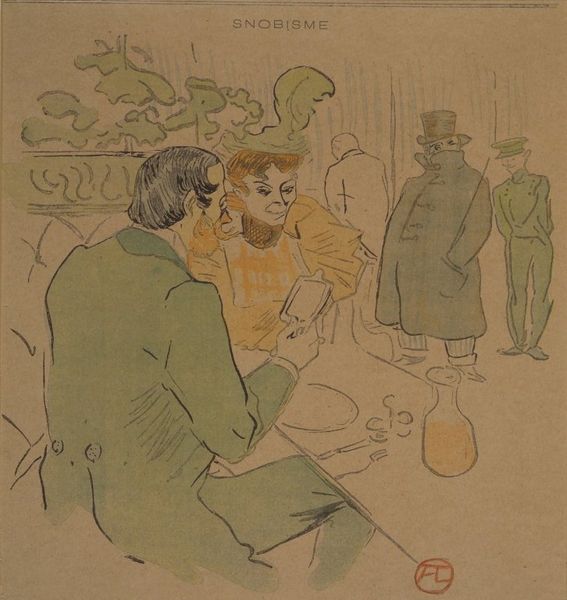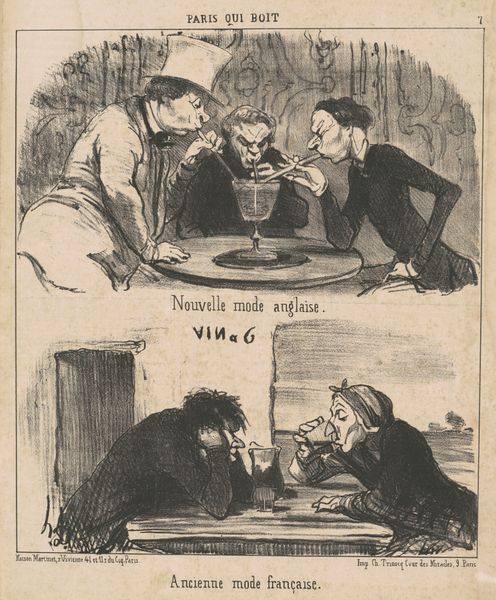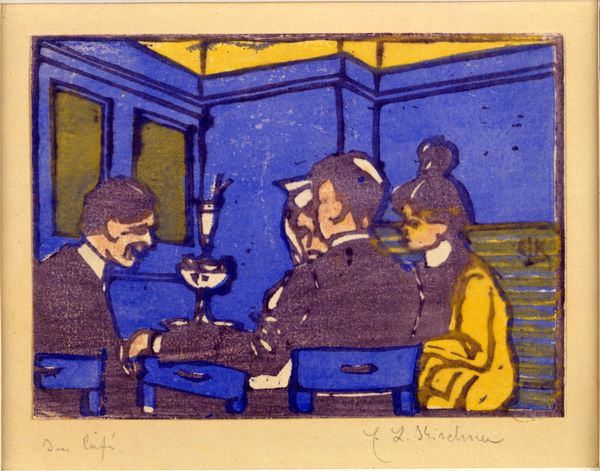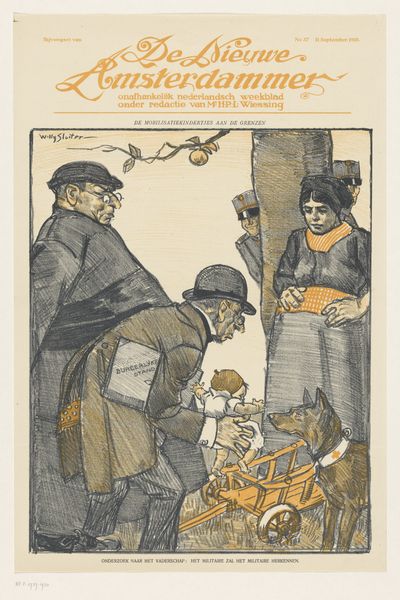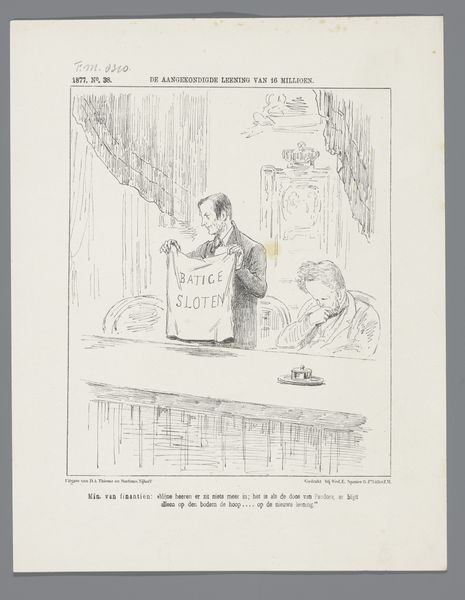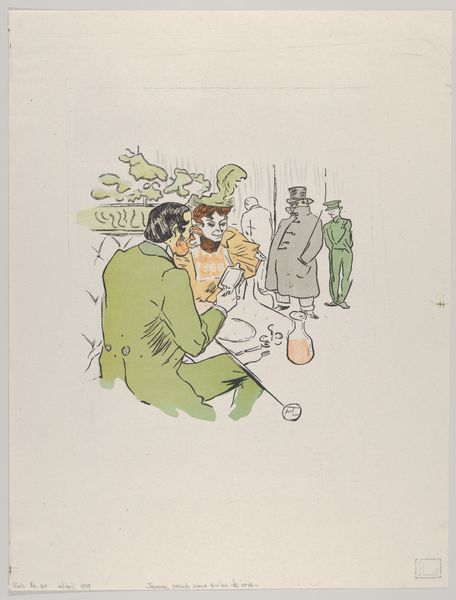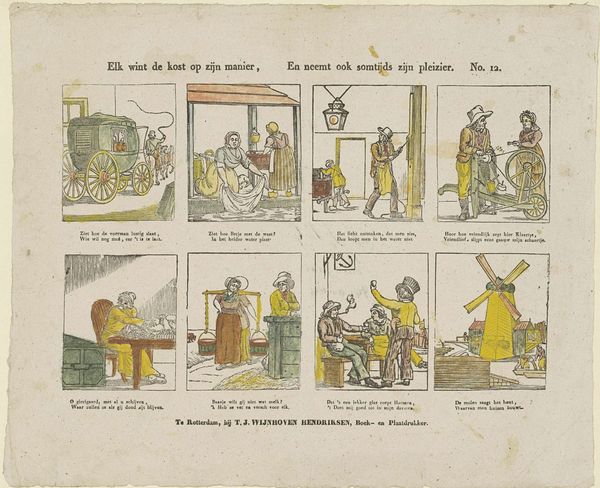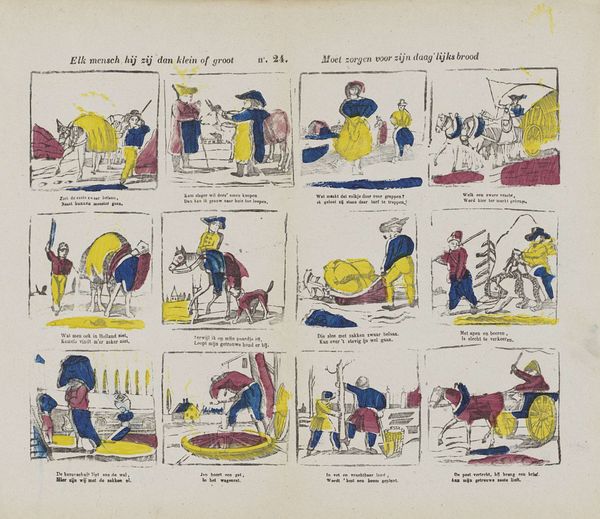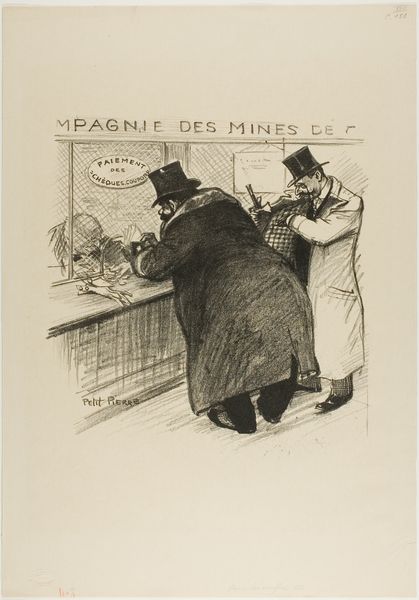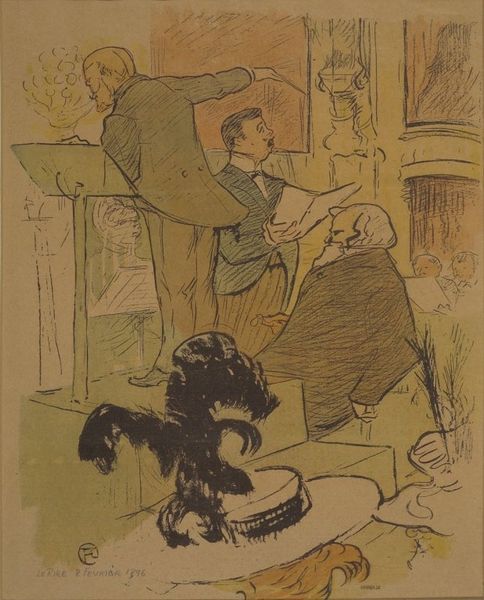
Fourth Performance: Le Devoir, for Le Théatre Libre 1892 - 1893
0:00
0:00
Dimensions: 228 × 310 mm (image); 238 × 318 mm (sheet)
Copyright: Public Domain
Henri-Gabriel Ibels created this print, ‘Fourth Performance: Le Devoir, for Le Théatre Libre,’ using lithography in the 1890s. Lithography is a printmaking process that relies on the repulsion between grease and water. The artist draws an image on a flat stone or metal plate with a greasy crayon or ink, then treats the surface so that ink adheres only to the drawn areas. The print is then made by pressing paper against the inked surface. Ibels’s use of lithography allowed him to capture the spontaneous and informal atmosphere of Parisian nightlife. The soft, grainy texture of the lithographic crayon gives the image a sense of immediacy, as if we are witnessing a fleeting moment. The way Ibels used this process embodies a shift towards more democratic forms of art production. Lithography made art more accessible to a wider audience, breaking down traditional hierarchies between fine art and commercial illustration. In this context, materials and making processes become essential tools for social commentary, and the creation of shared cultural experiences.
Comments
No comments
Be the first to comment and join the conversation on the ultimate creative platform.
